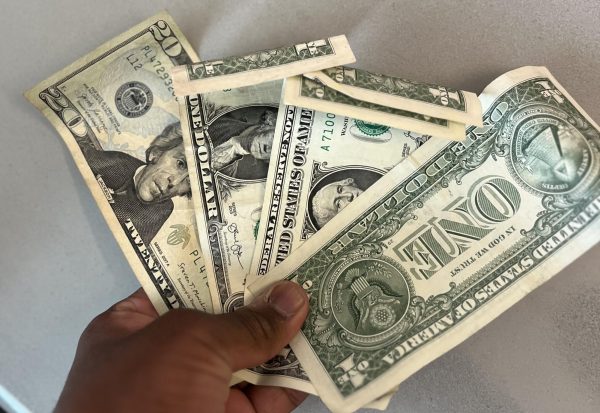Op-Ed: Breaking the Gender Barrier for Male Body image
***DISCLAIMER: This article discusses Eating Disorders***
Have you ever caught yourself scrolling on social media for hours, subconsciously comparing yourself to all of the “perfect” Instagram models? During quarantine, people had a lot more time on their hands to scroll through endless social media posts, increasing the pressure for a “better” body type but the quarantine also gave us the opportunity to improve ourselves physically and mentally.
It gave us time to work on ourselves. It gave us time to look and take inspiration from others. But for some, that line was crossed.
According to psychologist Erin Accurso from The New York Times, “the inpatient unit has exploded in the past year,” referring to the eating disorders program at San Francisco that she runs as the clinical director. She also directly states that the pandemic has affected teenagers, making them more susceptible to a negative body image. Nevertheless, this led to more people being hospitalized due to the unhealthy actions people took in order to achieve the “perfect” body type.
However, this is not the only cause for the rise in negative body image and eating disorders. Lisa Damour’s article in The New York Times discusses how the pandemic increased food
insecurity, which had led to anxiety among the families and also “increased the risk of eating disorders”. This led to an increase in emotional eating in the pandemic.
As we scroll through the millions of body positivity posts on multiple social media platforms, we realized something: most of the videos discuss positive body image mainly related to girls. Why is there such a vast gap between genders when it comes to body positivity? Although body image issues are more common in girls, there is an overall disregard to boys’ body image. Doctors point out the typical unawareness for boys’ disorders as they often go unnoticed due to the stereotype that body image is correlated with young women.

Low confidence and negative body image seems to be prevalent for both genders. This takes us back to us questioning the disparity between boys and girls’ body image.
The general lack of overall confidence compared to boys’ confidence may be a reason for the greater amount of awareness for girls’ body image.
With the dependence on social media to communicate to others during quarantine, this issue has been exacerbated. Many teenagers, boys and girls alike, increased their use of social media which led to more comparison and self-pressure because of social media, and unhealthy thoughts about themselves.
Furthermore, research collected by Yahoo Finance states that teenagers who spend 8+ hours on their phone were 5 times more likely to report feeling depressed nearly every day.
Specifically, social media and action movies have played a huge role in influencing teenage boys’ perceptions of the ideal body standard. Actors like Chris Pratt and Hugh Jackman who play influential muscular superheroes in action movies have convinced young men that the “ideal” body is attainable.
Although this trend does play a role in driving people to go to the gym, some are unable to set boundaries for themselves and do not know when to stop pushing themselves. Researchers have called this obsessive desire to have a muscular body “bigorexia” or “reverse anorexia”.
In fact, Newport Institute’s survey reveals that 58 percent of men said “the pandemic had negatively affected how they feel about their body.” In fact, CVHS freshman Carleton (Joe) Jarvis felt this underlying pressure on social media.
“I think that I started working out because I saw a TikTok where a guy was saying, ‘Oh, if you want to look like this, just do this to your diet,” Jarvis says.
As commonly known, social media has been very influential in body image. In other words, some like Jarvis used the toxic environment of social media as inspiration to become a better version of himself.
“This motivated me to start working out which, honestly, it might be a good thing, because now, you know, two years later, I’ve gotten this far with it (working out),” Jarvis said.
Jarvis was one of many individuals that used society’s toxicity as motivation to work out and improve his mental and physical health.
Along with Jarvis, CVHS senior Eisa Qureshi, also started lifting weights about a year ago (during quarantine), and it soon became one of his passions, making his overall day better and more productive.
“My mom is actually a bodybuilder, so she lifts weights every single day. So she kind of inspired me to start lifting weights and exercise more,” Qureshi says, “and I just fell in love with it.”
Although many individuals start working out to look a certain way and fit into the “perfect” body standard, many individuals like Qureshi and Jarvis ultimately started to become better versions of themselves.
Jarvis addresses the line drawn between a toxic and encouraging environment on social media: “I think that everybody should try to be the best version of themselves that they can and I think that it’s good to have some inspiration, but I think the problem comes when people are like photoshopping or lying about certain drug use, and etc. I think that that’s where the main problems lie,” Jarvis says.
Qureshi, part of Carnegie’s weightlifting class, agrees that photoshop is getting harder to distinguish in social media, making it even more toxic for individuals who are trying to attain a specific body type.
“It’s getting hard to find. And not even Photoshop; just like lighting, different kinds of lighting and filters and all that. It’s kind of cheap. It’s not realistic. If you see a picture of a bodybuilder, they have the best lighting, the best angles; and in reality, most people don’t look like that,” says Qureshi.
Although there is a lot of insecurity and editing on the “toxic” side of social media, the body positivity movement holds strong on the other side of social media. According to Vox, body positivity has become “ubiquitous” and is observed by many Instagram and TikTok users. A simple search for #bodypositivity has over 15.2 billion views on TikTok and 8.9 million posts on Instagram. However, there is a general leniency towards girls’ body image rather than boys’ body image.
The simple fact is that we want to see instant gratification. The gym doesn’t exactly lead to “instant gratification” because it takes time. This is one of the many factors that leads to people abusing laxatives and other methods that could likely lead to an eating disorder.
Many social media influencers and famous bodybuilders purposefully try to make their bodies look better, which unfortunately gives teenagers almost impossible standards to live up to. Although these bodybuilders are only trying to make their body look better so that they can have a better name on social media, what many influencers don’t understand is that they are role models to many young individuals.
Overall, the advocacy of body image for guys should have the same awareness as body image for girls. We should discuss our efforts to break the barriers, battle a toxic mentality, and discuss more about ways to push ourselves to a healthier mentality and lifestyle.
Your donation will support the student journalists of Carnegie Vanguard High School. Your contribution will allow us to cover our annual website hosting costs and fund field trips, competition fees, and equipment. We appreciate your support!
I'm a senior who's passionate about reading other people's unique stories!
Hi! My name is Ankitha Lavi and I am a senior at CVHS. I love playing the piano and am a huge music enthusiast.






Jessica Lin • Dec 9, 2021 at 2:03 pm
I appreciate how much nuance you were able to cover within the article. I also like the quotes you guys selected. Great job!
Sasha Cabral • Dec 9, 2021 at 2:01 pm
I love how you included the positives of social media and how it can encourage people to be better versions of themselves, especially by highlighting the voice of Carnegie students, all while still acknowledging social media’s adverse effects.
Sarah Fernandez • Dec 9, 2021 at 1:36 pm
I enjoyed the two opposite grade perspectives in the article. Also the quotes are very engaging.
Abigail Nunez • Dec 9, 2021 at 1:22 pm
I really like this story because it brings awareness to not just woman but also the difficulties and men have to go through when it comes to body positivity .